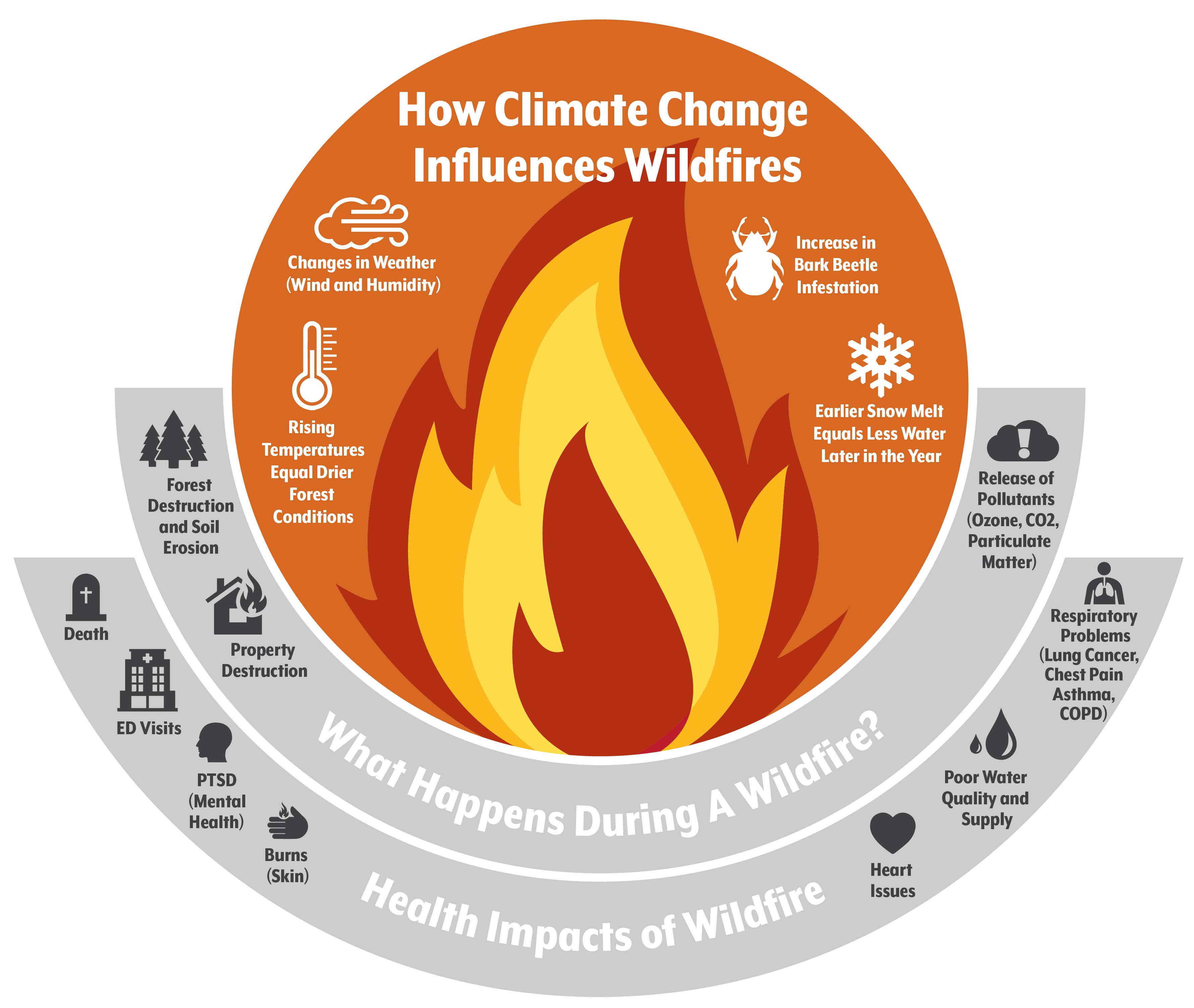Many Coloradans have been waking up to what has become a familiar sight and smell during 2020: wildfire smoke.
Months of hazy skies may seem especially jarring to Coloradans after their experience with clearer air this spring during Colorado’s stay-at-home-order, issued in response to the COVID-19 pandemic. The widespread behavior changes spurred by the month-long order resulted in lower levels of pollutants such as nitrogen dioxide and sulfur dioxide, as CHI explored in a recent report, Catalyst or Challenge.
The report also highlights a positive longer-term trend occurring in the Denver metro area: Air quality for some pollutants has been improving in the past 10 years due to more focused regulations and policies to promote healthy air.
However, the 2020 wildfire season has made the cleaner air of spring seem like a distant memory as much of Colorado has been blanketed with harmful smoke, which can negatively impact health, especially for sensitive groups.
Two of the three largest fires in Colorado’s history have occurred in 2020, causing local evacuations and, in the case of the Cameron Peak Fire, a massive smoke plume that filled the air with unhealthy pollutants. And Colorado’s fires are not the only contributors to smoky skies across the state. One of the worst wildfire seasons on record in California, Oregon, and Washington has sent smoke across the country and into Colorado’s air.
Wildfire Smoke Negatively Impacts Human Health
Wildfires in Colorado have grown larger and more intense in the past 30 years, and that trend is projected to continue, according to state climate scientists. A combination of forest management and fire suppression practices along with warmer temperatures, drier conditions, and the infestation of bark beetles has primed Colorado’s forests for the destructive fires we see today.
An uptick in large fires in Colorado and the western United States is a growing concern for communities living in or near wildland urban interfaces (WUI), but also for those who live hundreds of miles away. A wildfire’s damage extends far beyond its flames, as smoke can travel across state lines, and even across the country. The smoke contains toxic gases, such as carbon monoxide and minuscule particles called particulate matter 2.5.
Health impacts from exposure to wildfire smoke vary based on several factors, such as a person’s preexisting health conditions, length of exposure, weather patterns, and the level of pollutants as measured by the Air Quality Index (AQI).
Figure 1. The impact of climate change on wildfire behavior and human health.



